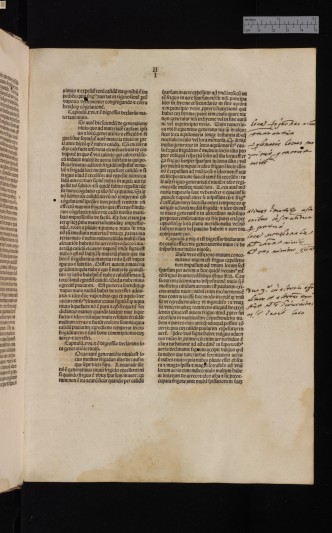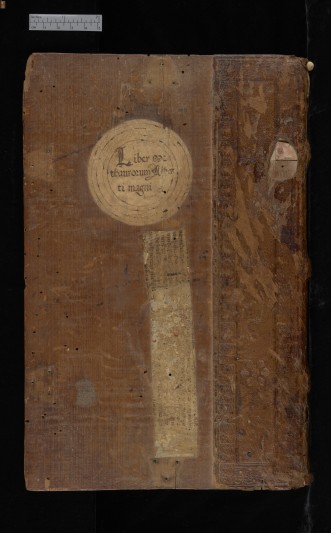A rare first edition of Albertus Magnus’ De meteoris, printed in Venice by Reynaldus de Novimagio, 24 May 1488, a folio of 98 leaves with seven woodcut diagrams.
Albertus Magnus (circa 1200–1280) played a major role in introducing Aristotelian natural philosophy to the universities during the Middle Ages, and in this work, a commentary on Aristotle’s Meterologica, Albertus discusses the various phenomena produced by moist and dry exhalations from the earth, such as meteors, winds, floods, earthquakes and volcanoes.
There are 70 surviving copies of the 1488 edition of De meteoris, with the largest concentration in Italian libraries; until now, only four copies were in the UK, one each at the British Library, Liverpool University Library, the Royal Astronomical Society and Oxford, New College (imperfect). The copy acquired by Cambridge University Library is bound in contemporary calf-backed wooden boards and bears traces of four clasps (now removed). An early ownership inscription (16th-century) places the book at the convent of San Domenico in Cremona; there is no further evidence of the book’s ownership between that date and its most recent owner, the Italian physician and collector Piergiorgio Borio, whose bookplates are on the inner cover. It is an appealing copy—of physical evidential interest to incunabulists and historians of the book generally, and valuable primary source material for teaching the physical construction and binding of medieval books.
Cambridge University Library’s important collection of some 4,650 incunabula includes strong holdings both of scientific works and of Venetian editions. These were recently catalogued online as part of a major five-year project, which has stimulated and contributed to the study of early printed books.

